Have you ever wondered why people paddle a kayak and row a boat?
Kayaking and rowing are two similar types of watersports that often get confused for each other.
You might have even heard someone mistakenly say that they were going to row their kayak through the water.
Being able to define the difference between the two sports gives you credibility as a boating enthusiast and helps you to know what you are going to be doing when you plan a trip.
- Are Kayaking and Rowing the Same?
- Can You Row In a Kayak?
- 8 Differences Between Kayaking and Rowing
- 1. They Both Use Different Equipment
- 2. The Boaters Face Opposite Directions
- 3. Paddles and Oar Techniques Differ for Steering the Boat
- 4. The Main Power Comes From Different Parts of the Body
- 5. Kayaks Are More Likely to Capsize
- 6. Rowing Allows for More Teamwork
- 7. Practicing Is Mostly Limited to the Water for Kayakers
- 8. Kayaks Offer More Portability Compared to Row Boats
- Is Rowing Faster Than Kayaking?
- Which Is Easier: Kayaking or Rowing?
- Can I Row In the Same Places Where I Can Kayak?
- Is a Kayak or Rowing Boat More Expensive?
- Is a Rowing Machine Effective for Kayaking?
- Conclusion
- You Might Also Like…
Disclosure: this post contains affiliate links (clearly marked with ), which means we may earn a commission if you buy something through them, at no additional cost to you.
Are Kayaking and Rowing the Same?
Kayaking and rowing do have a couple of basic similarities since they both involve using muscle power to move a boat through the water.
This has the advantage of allowing you to save on fuel usage and maintain a quieter approach on fishing expeditions compared to motor-powered boats.
You can also choose to paddle and row solo or with a friend.
Other than those two points, kayaking and rowing don’t have much in common.
Can You Row In a Kayak?
You can row in a kayak but only if you make some serious modifications.
Rowboats are specially equipped with features that make it easier to perform the correct movements for rowing.
A rowboat has special attachments on the side called oarlocks that hold the oars in place.
They are typically u-shaped or round, which allows for the oars to move freely as the boater rows.
Most rowboats also have sliding seats that allow for the rower to get the most power from their lower body movements.
Kayaks lack these features, but there are special kits available that you can use to convert one into a rowboat.
Row system kits come in different styles, and some have seats that swivel, slide or stay fixed in one spot.
If you plan to row your kayak often, then you may prefer a kit that has a sliding seat so that it feels more like a real rowboat.
The majority of row systems work best for sit-on-top kayaks and ones with open cockpits.
If you want to try using a row system, then you’ll want to check the specifications to make sure that the one you choose fits your kayak.
Once it is installed, you’ll be able to row your kayak instead of paddling.
You can also still pick up your paddle anytime you want, which gives you the best of both worlds.
8 Differences Between Kayaking and Rowing
The list of differences between kayaking and rowing is much longer than the similarities.
Once you see how the two differ, it’ll be impossible to confuse kayaking with rowing ever again.
1. They Both Use Different Equipment
The most obvious difference between the two is clear from just looking at how boaters propel their watercraft.
Oars are used for rowing, and these have a long handle with a flat blade on one end.
Paddles are used for kayaking, and they can have one or two blades.
With rowing, a boater will hold each oar in separate hands while it is supported by the oarlock.
Kayakers hold their paddle with both hands in front of or to the side of their body.
If a kayaker were to let go of their paddle, then it would fall.
Oars remain in place on the oarlocks even if a rower lifts their hands off of the handles.
The seats in a kayak are fixed, although they may differ depending upon the type of boat you pick.
Whether you choose a sit-on-top or a sit-in style, you can expect that your seat will stay stationary.
Meanwhile, a rowboat’s seat is designed to slide back and forth along tracks to increase the momentum of the rower’s body movements.
2. The Boaters Face Opposite Directions
You can also tell if a person is rowing or kayaking based upon their position in the boat.
With kayaking, you will always see the boater facing the direction in which they are going.
Rowing requires the boater to sit with their back facing the direction their boat is traveling.
For leisurely row trips, you might not need to worry too much about being able to see where you are going.
However, professional rowers rely upon a coxswain, or helmsman, to help them navigate their course.
A coxswain is included on rowing teams to give directions to the rowers along with instructions that help them coordinate the rhythm and power of their strokes.
3. Paddles and Oar Techniques Differ for Steering the Boat
There are several different techniques for turning a kayak, but the general rule is to perform a stroke with the paddle on the side of the boat that matches the direction you want to turn.
For example, you’ll put the paddle down on the right side of the kayak if you want to turn right.
Turning a kayak can also require you to shift your weight slightly in that same direction, which is called edging.
To turn a rowboat, you will also row with one oar on the same side of the boat as the direction that you want to turn.
However, you will want to hold the blade on the opposite side square so that the majority of the pressure on the oars is placed on the one that you are using to turn.
During team rowing events, there may be one rower who is tasked with maneuvering the rudder for turns using the foot controls.
4. The Main Power Comes From Different Parts of the Body
The power that you use to paddle a kayak comes mostly from your upper body.
Your core, shoulder and arm muscles all work together to push the paddles through the water.
Rowing involves using your upper and lower body in tandem to generate more forceful strokes that help you to move the boat faster through the water.
5. Kayaks Are More Likely to Capsize
At first glance, it might seem like the longer, more narrow rowing boats would be more likely to capsize, but that is not the case.
This is because a rowboat has a lower center of gravity due to the rudders sitting below the boat in the water.
The long oars are another asset that helps to stabilize the boat by adding width.
Capsizing a rowboat is not impossible, but it is very difficult.
Kayaks are fairly easy to capsize if you shift your weight incorrectly or get thrown to one side by another boat’s wake or strong waves.
Kayakers accept this possibility and learn maneuvers such as rolls and wet exits to ensure that they recover quickly from a capsize.
6. Rowing Allows for More Teamwork
Kayaks typically come in single or tandem styles.
This means that you are usually limited to only two people in one boat.
Rowboats can be powered by up to 8 people.
Sweep rowing is one version of the sport that involves each rower powering one of the oars.
Sculling is another way to row, and this version has each athlete using an oar in each hand.
7. Practicing Is Mostly Limited to the Water for Kayakers
Kayaking practice is difficult to do on dry land.
While you can practice the general motions of your paddling strokes from a seated position, there is no way to mimic the same level of pressure that you’ll feel as you push the paddles against the water.
Rowers can use rowing machines to strengthen their muscles and skills on dry land.
These machines use cables or air to provide resistance that feels more like they are pushing against the water.
8. Kayaks Offer More Portability Compared to Row Boats
Although practicing might be harder with a kayak, this style of boating does come with the advantage of being easier to do anywhere.
Kayaks come in lightweight and even inflatable styles that make them easier to transport.
An inflatable kayak can even be fit into a backpack when it is deflated, which allows kayakers to hike into more remote launching destinations.
Rowboats are less portable due to their size and lack of reliable inflatable options.
Depending upon the type of rowing boat that you get, you may need a roof rack or trailer to haul it to the water.
Even inflatable rowboats tend to be bulkier than the same type of kayak.
Is Rowing Faster Than Kayaking?
The answer to this question can vary depending upon the circumstances.
If you were to put two athletes with similar strength and stamina in a competition, the results would still be influenced by factors such as the aerodynamics of the boat and the water conditions.
Both kayakers and rowers tend to use speed records that are based upon the amount of time it takes to travel a certain distance in a specific body of water.
The average person can expect to go about 2.5 knots or 3.5 mph in a kayak.
A person can expect to go about that fast in a single-person rowboat.
Keep in mind that these speeds are set for a leisurely pace that the boater can sustain for several hours.
It is possible for either boat to reach faster speeds for as long as a boater’s stamina will allow.
Rowboats have a few advantages for going faster.
A strong athlete will be able to generate more power from using their upper and lower body together, which could help them reach faster speeds.
Rowing teams also have the advantage of using additional manpower.
A competitive row boating team of eight men is capable of going as fast as 14 mph.
Which Is Easier: Kayaking or Rowing?
This tends to come down to personal preferences.
Some people find that using their arms and legs together to row is more strenuous than kayaking.
Others might say that kayaking requires more of a learning curve to get started since kayaks are less stable and require special paddling techniques in certain circumstances.
Rowers tend to find that propelling their recreational boat is fairly simple once they master the sequence of movements that are required to perform a stroke.
Can I Row In the Same Places Where I Can Kayak?
Rowboats do best on calm bodies of water that allow for the most efficient use of each paddling stroke.
Lakes, large rivers and other similar waterways are all perfect for rowing boats.
Kayaks also do well in calm bodies of water, but they are better at maneuvering around obstacles in the path.
This is why you’ll see kayaks running rocky whitewater courses and soaring over waterfalls.
Both kayaks and rowboats can be used in the ocean.
Some boaters even make it a goal to break records for sea tours.
However, kayakers and rowers should be cautious about making sure that their skills and boat are ready to handle potentially rougher waters.
Is a Kayak or Rowing Boat More Expensive?
Kayaks are generally less expensive compared to a rowing boat, and beginner recreational styles can be found for under $200.
Keep in mind that you do get what you pay for, and higher quality kayaks can cost well over $1500.
Rowboats tend to start out closer to $1000 and continue to increase in price for those made with better designs and materials.
You’ll also want to factor in the cost of paddles or oars along with any other types of equipment that you need to purchase such as PFDs.
Is a Rowing Machine Effective for Kayaking?
Powering any type of watercraft purely with your strength and stamina alone requires you to work out if you want to increase your speed and avoid early fatigue.
Rowing machines are clearly the best way for rowers to perfect their skills, but what about kayakers?
This type of exercise equipment does have benefits for kayakers.
A rowing machine workout targets the upper back muscles along with your core, which are all areas of your body that you rely on to paddle a kayak efficiently.
You’ll also find that building up your leg strength helps you to brace better in your kayak when you head into rougher water.
The aerobic exercise that you get while using a rowing machine builds your cardiovascular system so that you’ll have more endurance during your kayaking expeditions.
Conclusion
There are quite a few differences between kayaking and rowing.
The equipment, method for propelling the boat through the water and even how you prepare for each sport varies significantly.
While most boaters will develop a preference for one over the other, everyone can agree that spending a day on the water is amazing whether you are holding on to a pair of oars or a paddle.
You Might Also Like…
-

Kayaking Vs. Rowing: What’s the Difference? (8 Key Differences)
-
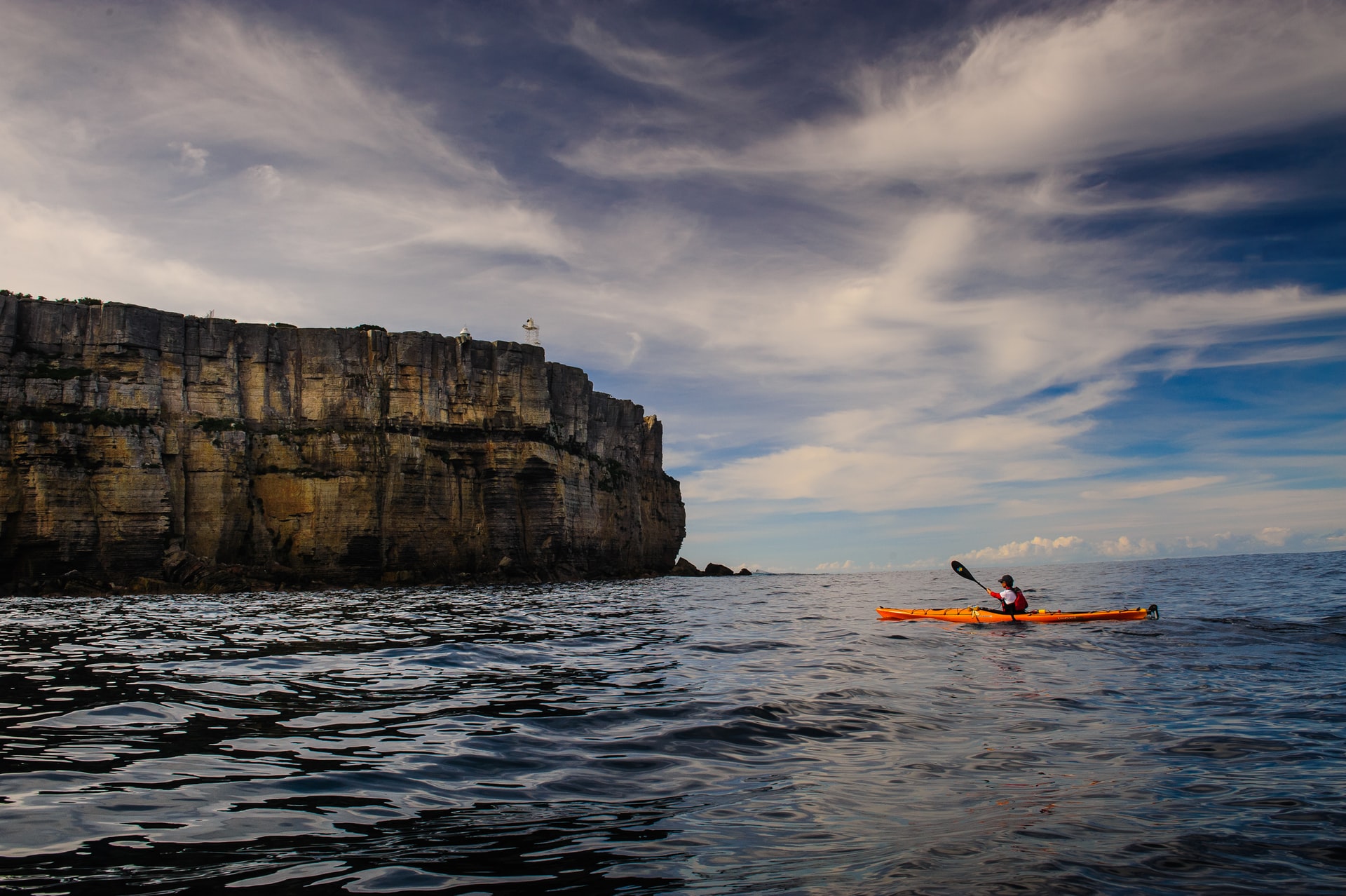
When Is It Too Windy for Kayaking? (Crucial Facts You Should Know)
-

When to Go Kayaking? (What Every Kayaker Should Know)
-

Will I Get Wet Kayaking? (Common Reasons & How to Stay Dry)
-
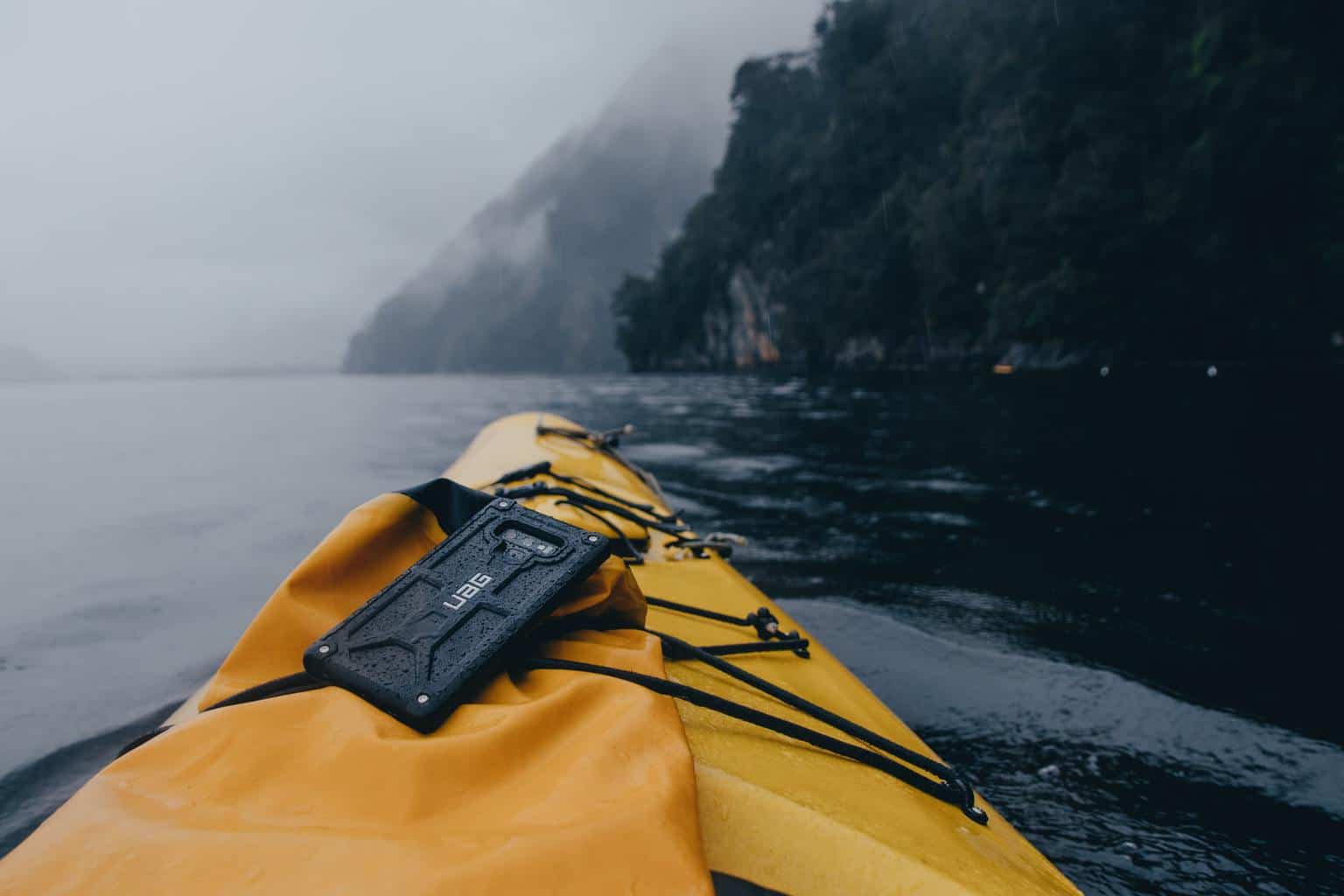
Should I Bring My Phone Kayaking? (7 Good Reasons)
-

What Shoes to Wear Kayaking? (+ the Best Shoes for Your Needs)
-

Can Kayaking Cause Chest Pain? (What Every Kayaker Should Know)
-
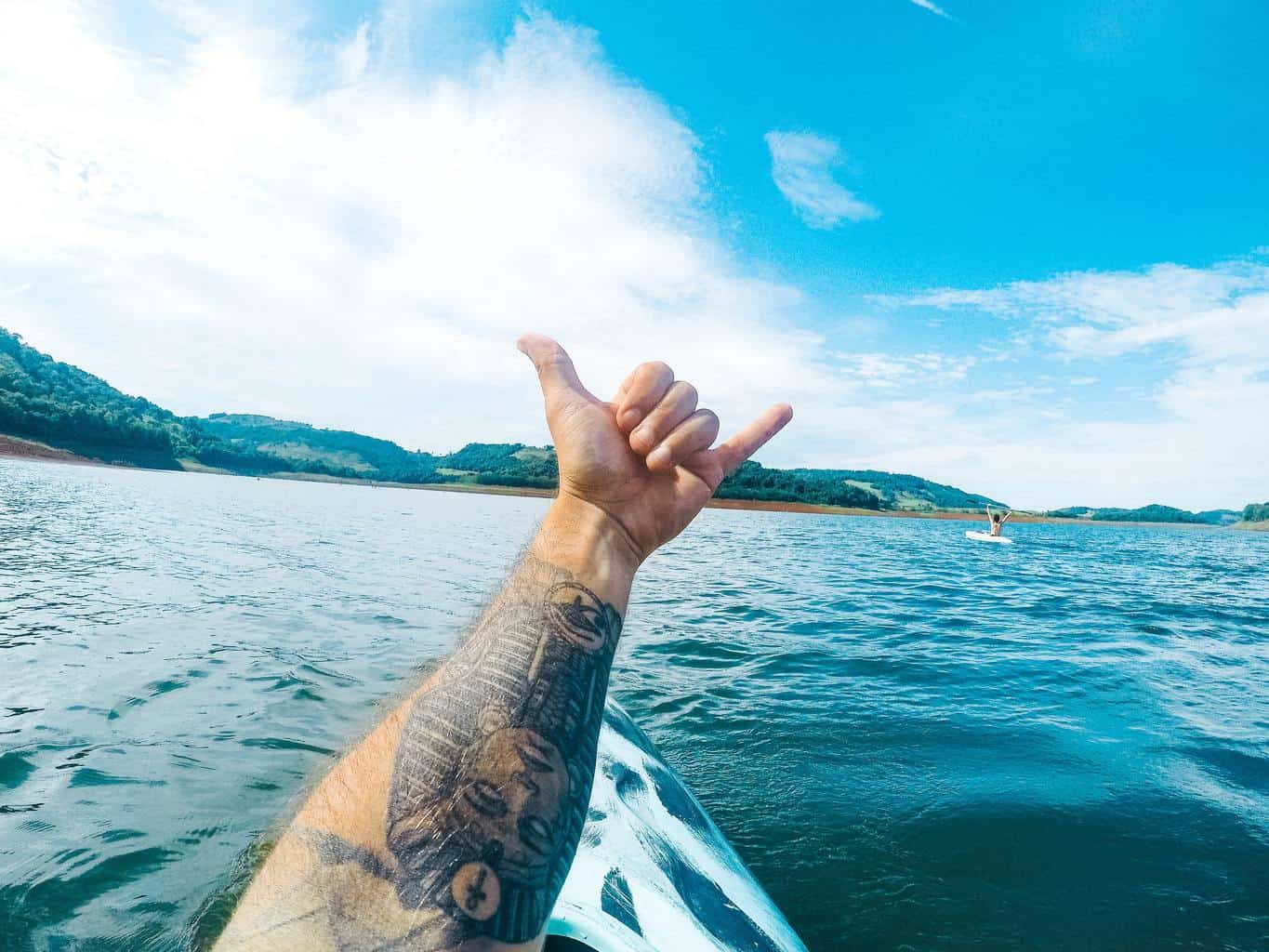
Can I Go Kayaking With a New Tattoo? (Facts You Should Know)
-

Can You Go Kayaking On Your Period? (+Practical Tips)
-
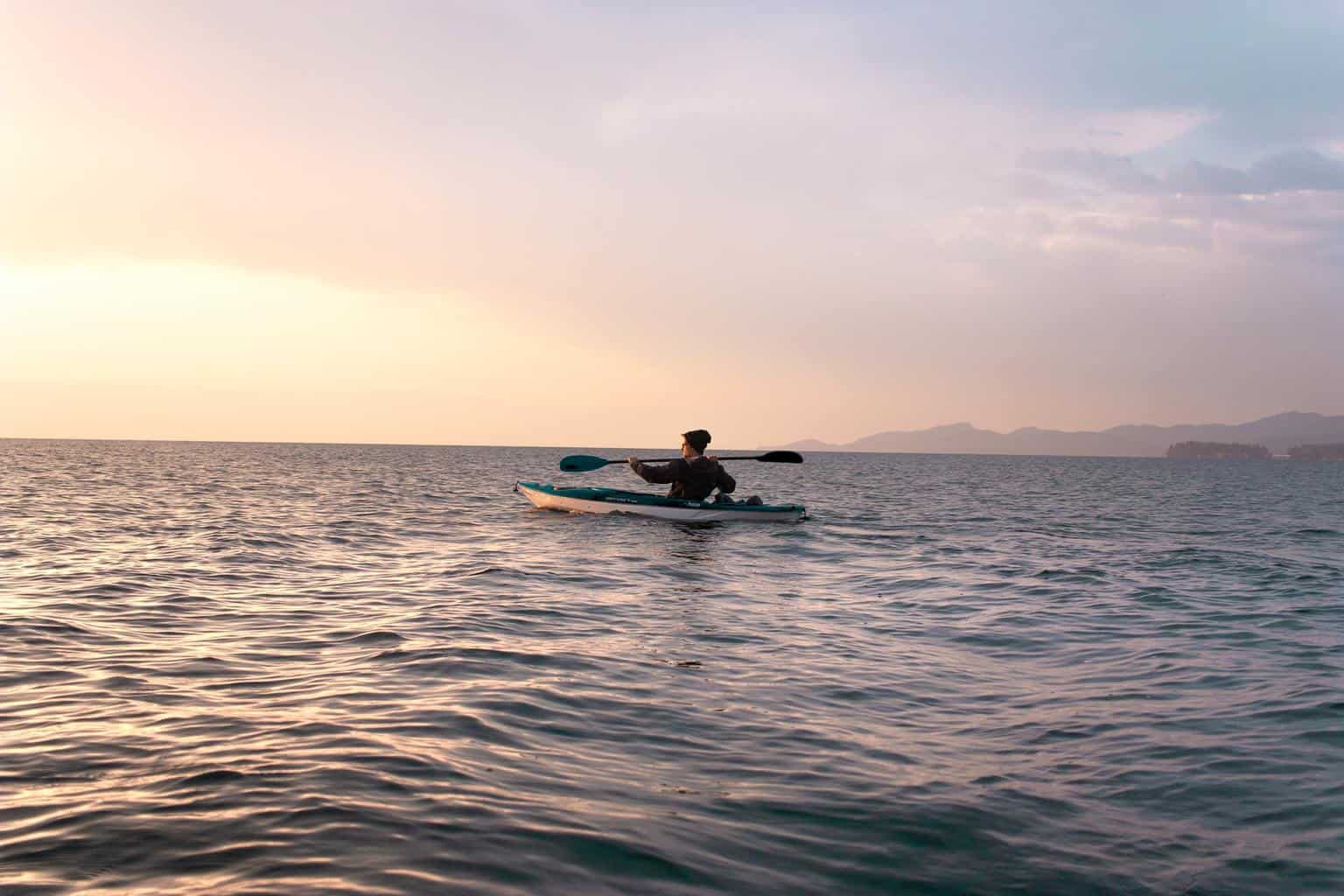
Can Kayaking Cause Hemorrhoids? (What Every Kayaker Should Know)
-
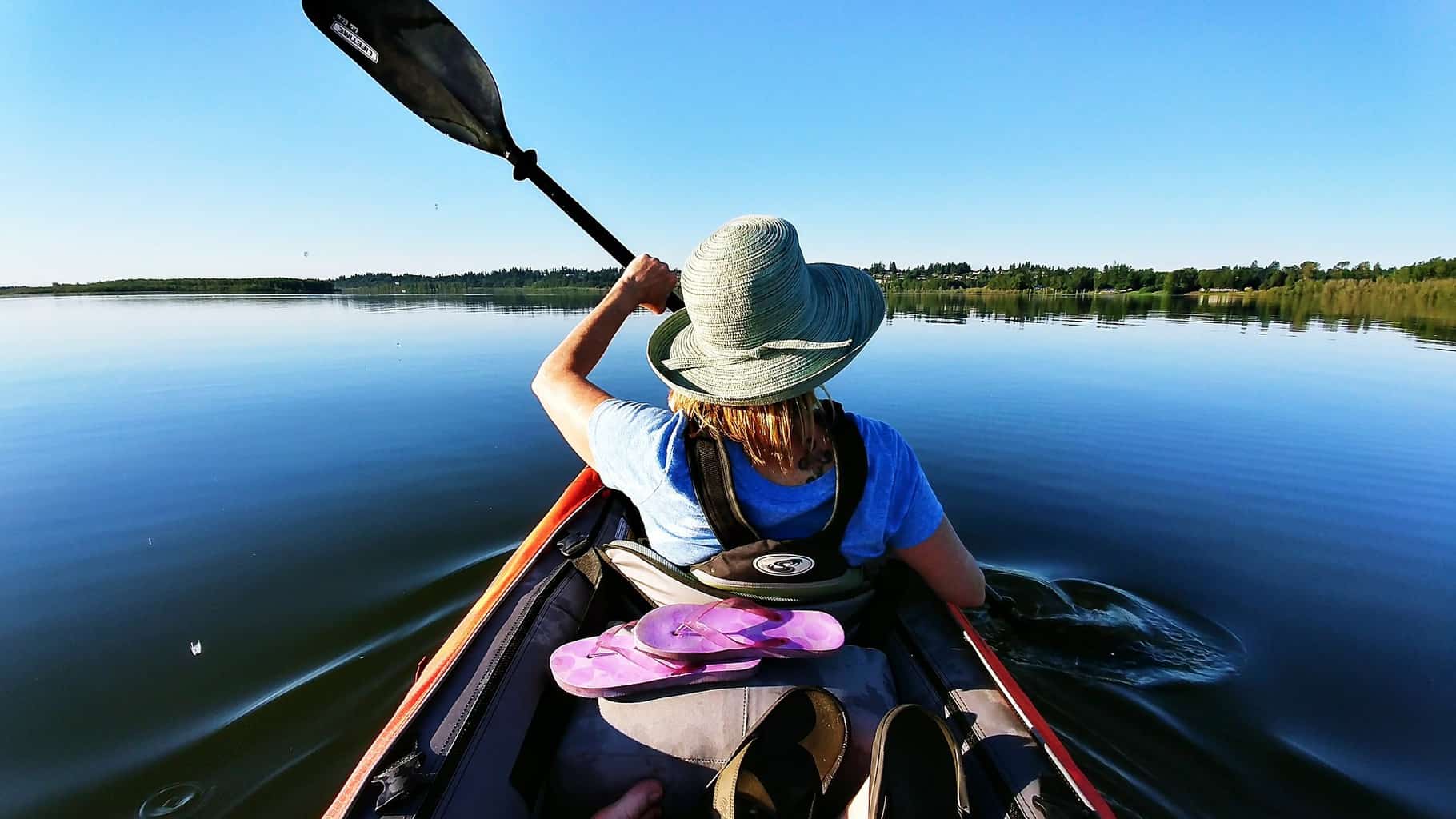
Can Kayaking Cause Tennis Elbow? (+8 Simple Tips to Avoid It)
-

Can Kayaking Cause Sciatica? (+7 Tips to Avoid It)











